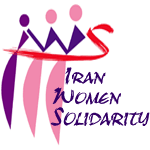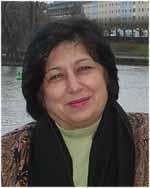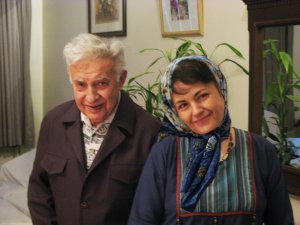Today we not only celebrate Human Rights Day, but also the launch of the year long campaign leading to the 60th anniversary of the Universal Declaration of Human Rights. The theme for 2008, the year long campaign is “Dignity and justice for all of us”. As we reflect today, there are many reasons to celebrate how far human community has come since 1948, in it’s journey of protecting and ensuring fundamental freedoms for each member of human race.
The life of the declaration, which was conceived as an outcome of the soul of a world severely injured by the horrors of the Second World War, has been a very dynamic life. Since this declaration was first born, countless number of people, human rights activists and scholars have contributed to broaden the impeccable vision and desire of the people who produced the first draft of the Declaration. This document not only was the first, but in a way it was the mother of All global documents to ensure equality, justice and dignity for all. Today, thousands of human rights representatives, organizations, agencies, scholars and activists are working on each of the articles of this declaration to expand it’s definitions and bring it home to a world marked with complexity and intersectionality of race, class, religious beliefs, ethnicity, gender, migration, etc. . The spirit and definition of this documents has evolved to be inclusive of public as well as private rights, civil as well as political rights, economic as well as environmental rights and is now available in more than 360 languages and officially is the most translated document in the world.
The declaration has inspired the constitutions of many new democracies such as the constitution of South Africa which is one of the most progressive constitutions in today’s world. It has become a benchmark of civility in it’s broad sense and what is honorable and accepted behavior in our world
The declaration has also developed and advanced to provide not only a political frame work for governments, global and national agencies, but a framework for many grassroots activist who are working for the plight of their constituencies on issues related to equality, peace, justice, dignity and peace. This has build up a strong, inspiring and diverse global human rights movement in today’s world. One may suggest that the declaration has also provided a personal framework for how we should live our life in public and private domain as it embraces the notion of personal is political and political is personal and is constantly moving toward to being an integral part of everyone’s life.
The declaration remains as relevant today and it was 59 years. As the human rights principles have moved from margin to the center of agenda for people of our world, a paradigm shifts gradually became apparent in how people all over the world are relating to this document. It was a time that the Declaration was being perceived as an important document which should be read and filed in the volumes of other global documents. It was a time that the declaration was not “ live and communicative ” in the hands of grassroots social movements. But today, people are relaying on the declaration and it’s language to hold governments accountable for their international commitments and norms they have willingly accepted.
The global dominant patterns such as the rise of extremism in religion, politics and identity, militarism, globalization and the growing gap between rich and poor, the powerful and the vulnerable the aggressors and the victims, have created multi layered barriers to achieving protection of human rights of all. While Militarization and the business of war making fueling conflicts and violence, religious extremism all over the world whether in position of state power or not thriving and sustaining on crisis, violence and culture of fear and intimidation It is indeed the principles and values in the declaration that can be a truly binding force in today’s world at global and national level, forming globalized solidarity in a globalized world of power, wealth, control and monopoly.
From Police brutality in Burma to the condition of Guantanamo detainees, from silencing the opposition groups in Pakistan to arrest and detention of women’s rights activists in Iran, from violence against women at home to the catastrophes of war and displacement in Iraq and Afghanistan, from the lack of affordable housing and health care in United State, to the lack of freedom and economic justice in former Soviet Republics and Eastern European Countries from the execution of minor and adults without a fair trail in Iran to the increased number of death penalty in China and US, human right abuses is everywhere, all the time.
In order to respond to this reality and to take advantage of the opportunity that the new and affordable digital technology such as camera-phones and small video camera has provided, HUB was launched today in honor of Human Rights Day. Through the HUB, individuals, organizations, networks and groups around the world are able to send a 60 second video clip and bring their human rights stories and campaigns to global attention and to mobilize action to protect and promote human rights.
This anniversary year is an occasion to renew our commitment to human rights education, as it is often those who most need their human rights protected, who also need to be informed that the Declaration exists — and that it exists for them.


